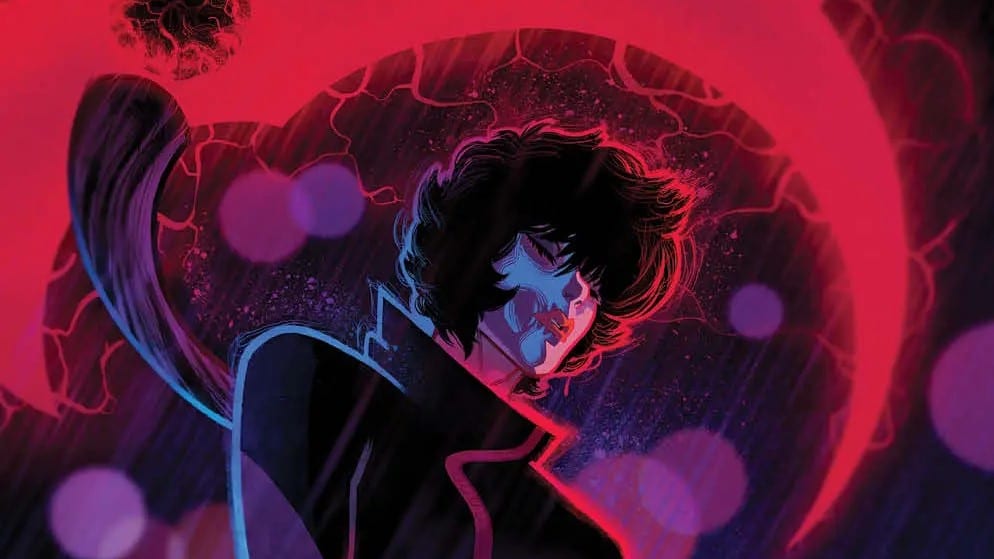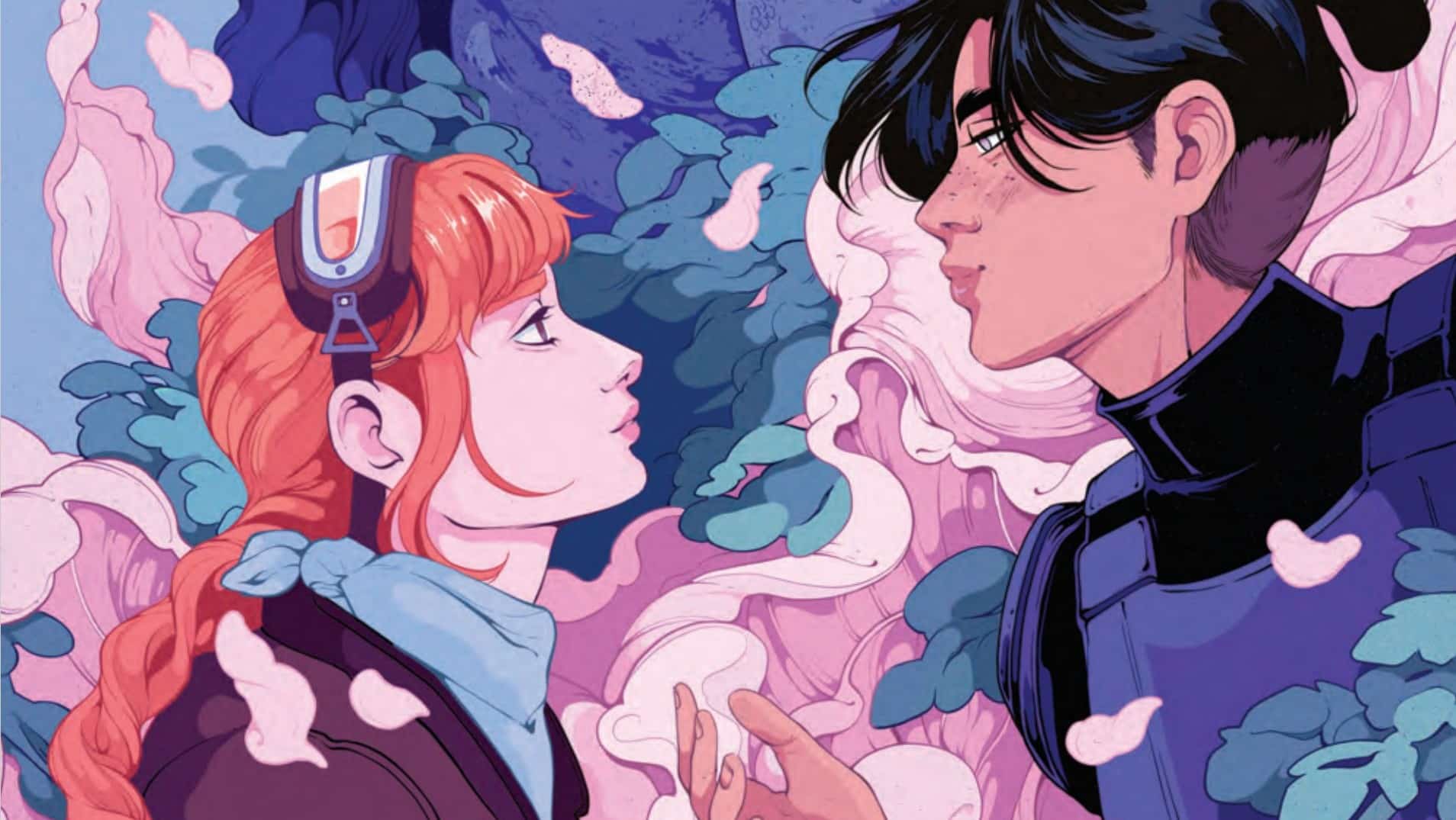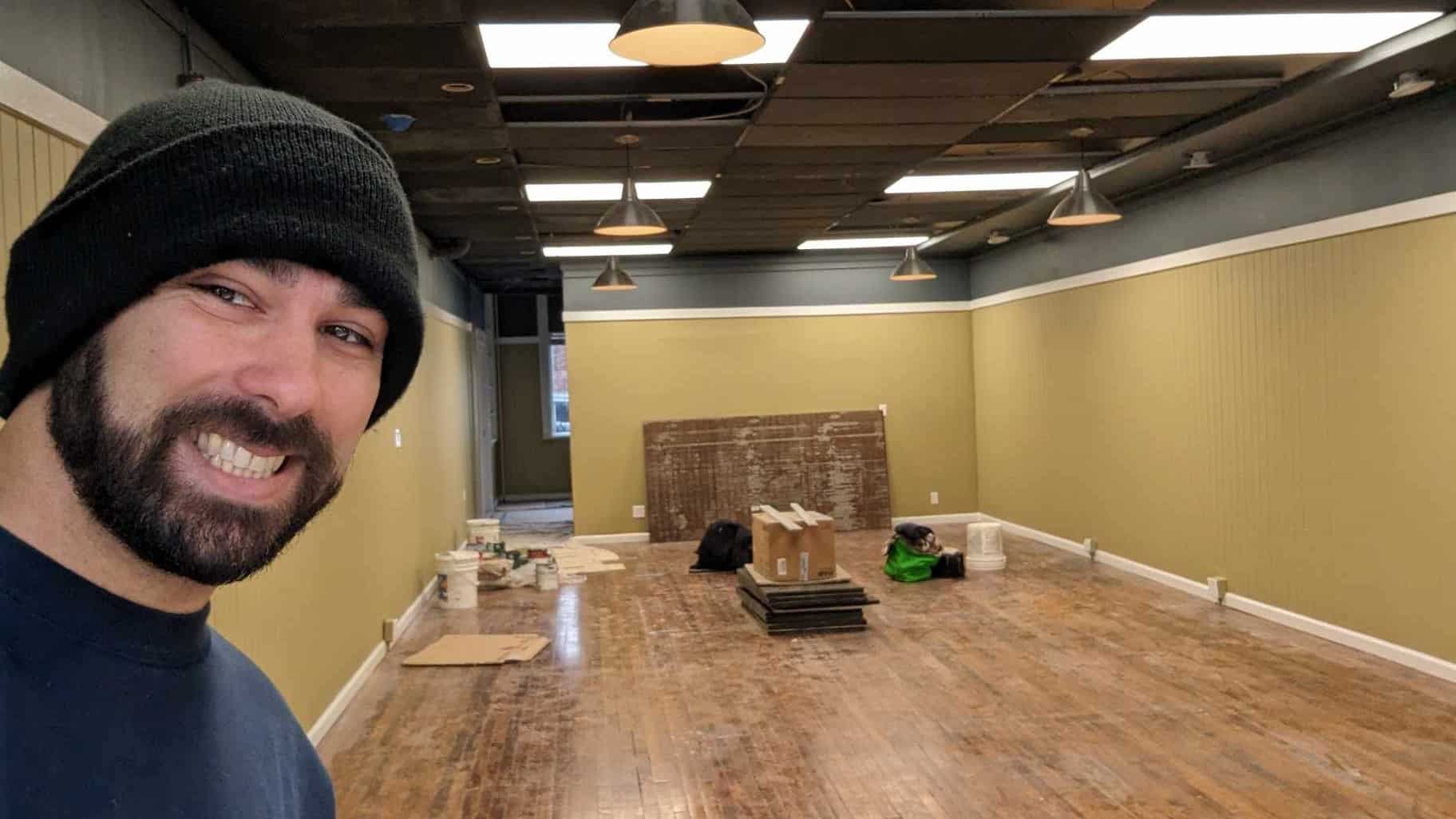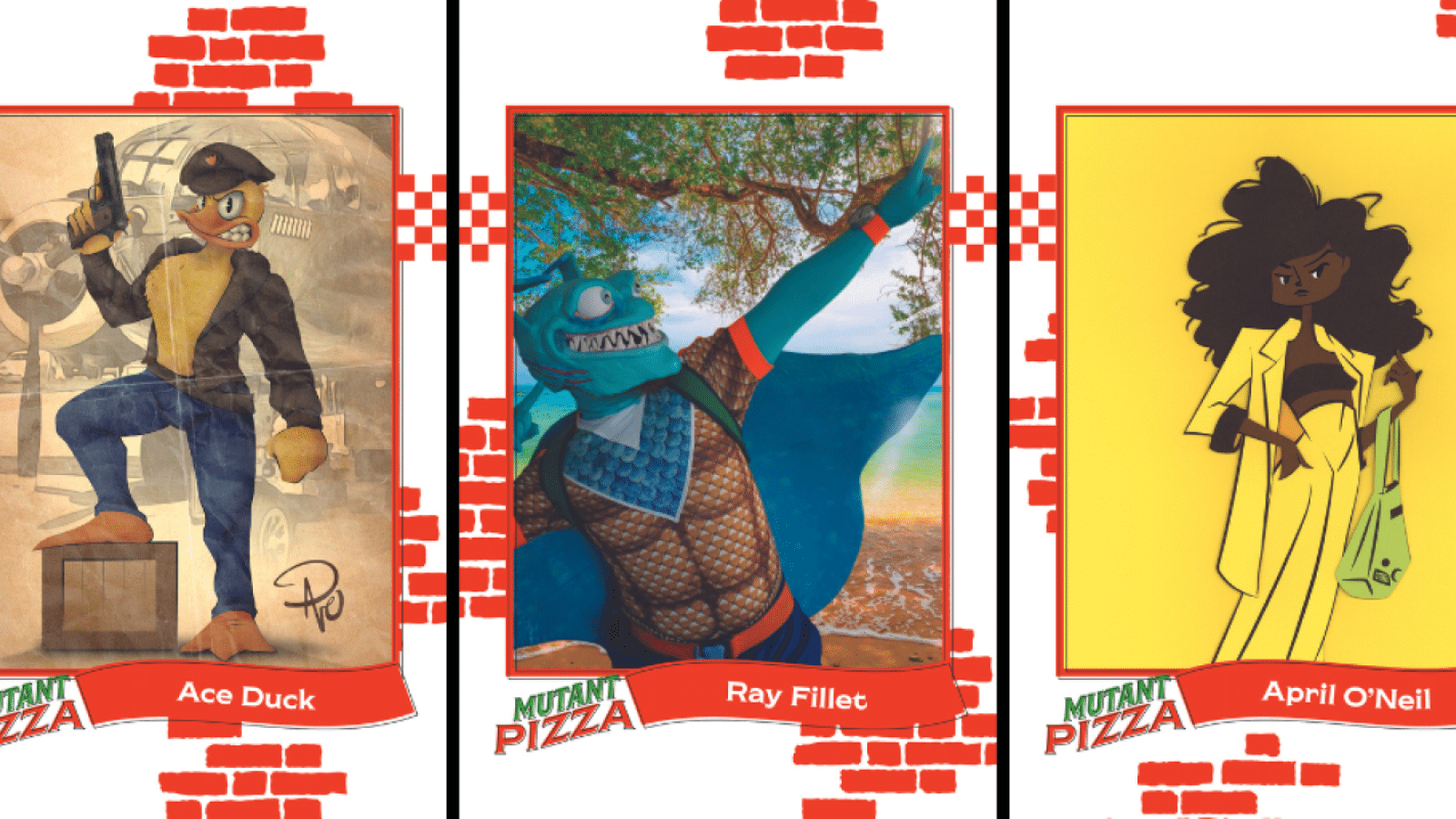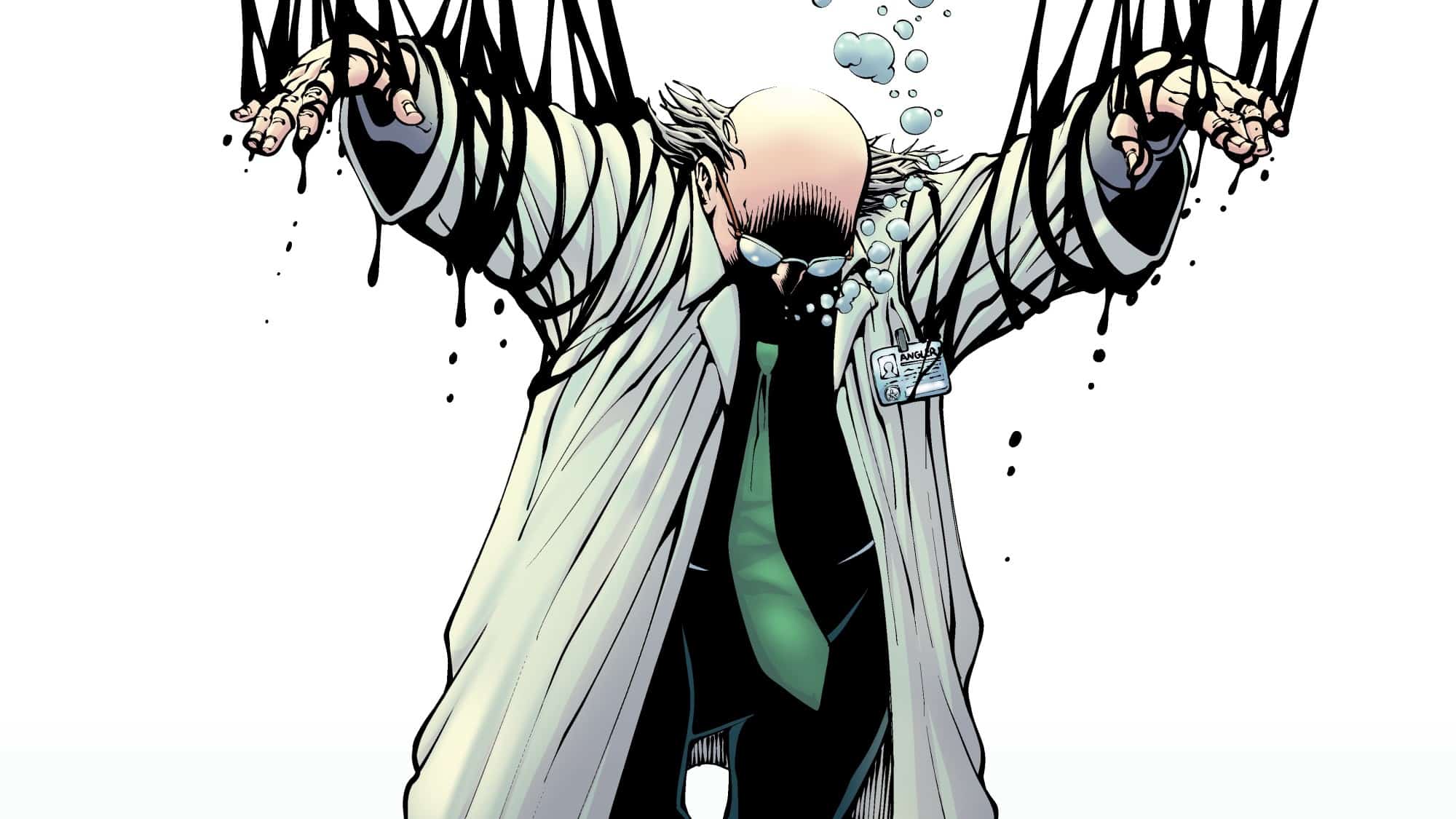I had the chance to attend Dragoncon this past weekend and asked Rico Renzi, artist of Spider-Man: Enter the Spiderverse, She-Hulk, Unbeatable Squirrelgirl, and currently Grim a few questions about his art, his contributions to Grim, and life and death! Renzi has utilized his masterful pairings of color to create an instantly recognizable body of work appearing in magazines, books, and comics. Look for his energetic work in front of your eyeballs in more comics shops near you!
Sections of this interview have been modified for clarity or conciseness.

Cat: I’ve really appreciated your work with colors, especially in the Grim comic series. Did you have a plan for how you were to use color in the issues starting out?
Rico: Red and black were the biggest thing. Flaviano kind of planned that when he was doing the designs. Sometimes it’s challenging to separate the characters from the backgrounds but it’s been really cool. Flaviano and I did a short series, Gwenom (Spider-Gwen: Gwenom), as almost like a practice. We used a lot of the same palette with the black and red and white. We wanted a My Chemical Romance type of thing.

Cat: Ok, ok yeah I see it!
Rico: It’s kind of restrictive sometimes but it’s a good challenge.
Cat: Yeah I noticed in the first issue it’s red and black and then blue and it seems kind of like each issue adds more color. Was that something you guys had planned out?
Rico: I didn’t know we were going to Las Vegas! And so by that time I just went crazy with the color. So I showed it to everybody and he [Flaviano] gave me some tips. He said we were gonna be in Vegas for a few issues so maybe do this. We wanted to separate things a little. He seemed to kind of be guiding me that white would be my friend to guide the eye. When everything is so loud, if you put something white it’ll draw the reader to that area.
I don’t always know what’s going on until Flaviano tells me. But I do talk to editors and get the script. When we first started, we didn’t know it was going to be an ongoing [series] so I didn’t have much advance. So we planned for five to see how it goes.
I feel like that’s everything in comics right now. You try for one trade and if it goes well you keep going.
Cat: Yeah you get five or six issues and if you’re really lucky you get more.
Rico: Right! And it’s gotta be tough on writers because in the back of their head they might have something [ongoing] but they also want to have something complete.
Cat: Which leads into my next question, how do you get to coordinate with Phillips and Flaviano for Grim? Do you talk to Stephanie [Philips] about plans at all?
Rico: Yeah, I talk to Stephanie through editors and they’ll usually send me notes. There haven’t been too many notes. After the first issue there are usually a bunch of notes from everyone where you’re just kind of feeling everybody out. Like we had never worked with Stephanie before but me and Flaviano already had our thing figured out. We had a lot of revisions on the first issue [of Grim] up to the last minute. There were a lot of revisions from Eric and Gavin (Eric Harburn and Gavin Gronenthal, original editors of the first arc of Grim #1-5), though Gavin’s actually moved onto something else. Eric was just like let’s do this and make it perfect and that’s fine! I’d rather get that stuff out at the beginning and then it goes much smoother.

Cat: Do you then get a little more freedom?
Rico: Yeah because I know what they want better. Communication and collaboration is the big thing. I’d rather someone tell me they don’t like something than them being unhappy with it. That way everyone can invest their time and make the best thing you can make with what you have.
Cat: Does that then condense how much time you get per issue?
Rico: Boom [Boom! Studios, publisher of Grim] is really good at being ahead of schedule. Like we had finished the first issue way before it came out. Every company is a little different. I feel like Marvel is the tightest as far as turn around. DC used to be really good as far as having time but the margins have gotten a little smaller. Since the pandemic hit, I feel like everybody’s been on a tighter schedule trying to catch up. But for Grim we have time and we’re a little ahead. We just finished the first collection.
Cat: Did you go to school for art or are you self taught?
Rico: Self taught. I used to work overnight at Kinkos and it was basically like the first time I had access to a computer so I taught myself photoshop. You know, those were the days of like AOL instant messenger so I’d also be talking to people in comment message boards. I’d talk to them if I was trying to figure something out or if I saw someone who was doing a thing I was trying to do I’d just ask them how. I feel like everyone has been really forthcoming with helping me out with [their] knowledge. So I’ve always tried to do that too and help the next generation. That was in the early 2000 and I’ve been at this for awhile.
Cat: You use such a variety of dynamic tones and colors have you ever made one of those color square guides?
Rico: Like a color wheel?
Cat: Not quite a color wheel but I was terrible at colors and in school they had us make basically a quilt of like each color so you’d have your greens and reds and yellows and you’re supposed to fade from dark green to light green but then if you turned it to black and white it’s supposed to just look like 5 lines. Did you ever experiment with something like that or do you just go with what you feel?
Rico: Nah. I feel like art school teaches you to turn the color into grays and if it doesn’t work you’ve screwed up. But the way I see it is really the vibrancy of colors against each other is important. Like if you turned my stuff to gray it would look really flat. But I prefer to put fully saturated colors next to each other because it’ll either vibrate or cause confusion or separate things. That’s more my move. And I know a lot of editors have told people to try to color like me and I can tell they’re trying to do the values. But to try and do it like me you take colors at opposite ends of the color wheel [and put them] against each other. I learned everything I do from Brian Stelfreeze. He was kind of like my art teacher. He was my art school (laughs).

Cat: Ok cool! Expanding on that, do you choose colors to go with certain moods? Like are there certain colors you’re like ‘Well that reads pensive or that’s mad to me’?
Rico: Yeah, red is obviously cliche but it’s cliche because it works because it’s an intense color and if it’s a lot of action I’ll warm things up. If someone’s getting knocked out I’ll use a lot of colder colors or make it blue. Like the first issue of Grim in the snow is just trying to make it feel as cold as possible with the blues and white and when Jessica appears it goes super hot like all reds.
Cat: Yeah you nailed it! So moving away from colors, do you think someone’s death is as important as how they live their life?
Rico: Oh man. That’s too deep! I just like to color comic books! (Laughs) We were having a serious talk about death last night. We were in a group of people who believe in an afterlife and people who don’t and the thing that came up is if the afterlife is real then it’s like so long compared to your life.
Cat: Right! That’s the thing that would always freak me out as a kid. I don’t want to be dead forever!
Rico: Right, right! If it is, I hope it’s cool because forever is a really long time!
Cat: I’m with you on that one! Do you have any theories or thoughts on why Jessica, the reaper at the center of the Grim series, cares about finding out how she died?
Rico: I feel like it’s one of those things that if someone doesn’t know something about themselves, it would drive them crazy. It’s the not knowing more than how. Like the how isn’t the important thing. It’s why don’t I know?
Cat: Alright one last death question. How would you want to be remembered after you die?
Rico: Definitely as a loving husband and father.
Cat Purcell is a Career Services Librarian, cosplayer, artist, and massive coffee consumer.

